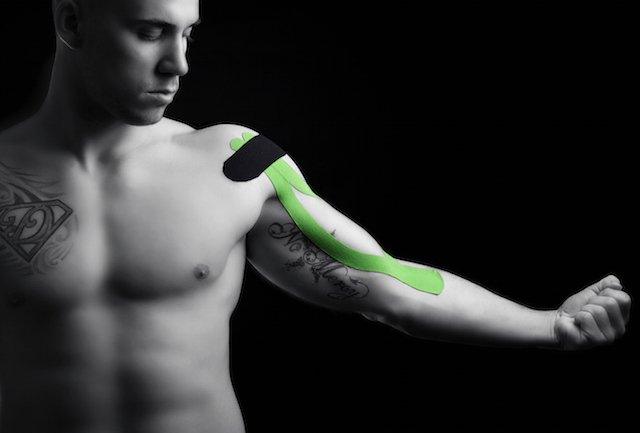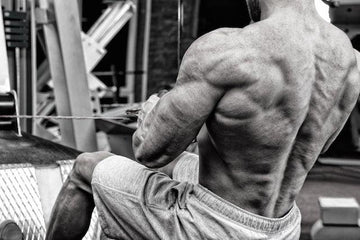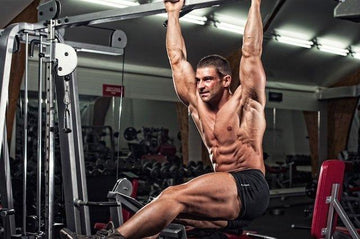

Kinesio-Tape: Performance Enhancer or Hype
Table of Contents
Kinesio-Tape: Performance Enhancer or Hype
By: Robbie Durand
There is a growing trend among football, CrossFit, basketball, and dedicated lifters to use kinesio-tape and compression garments to enhance performance, improve recuperation, and reduce injury. Kinesio-tape is a specialized tape that can be applied in a various pattern and as one manufacturer quotes, “to reduce pain and inflammation, optimize performance, prevent injury and promote good circulation and healing, and assist in returning the body to homeostasis.” There have been some studies to show that taping can improve shoulder and ankle stability. There are some individual studies that have reported beneficial effects for improved blood circulation and muscle oxygenation, blood lactate clearance, force and power, and decreased landing impact forces. Other studies have found that there was no benefit to using kinesio-tape. Researchers wanted to re-examine the use of kinesio-tape and compression garments on balance under two condition: acute non-fatigued and post- fatigued conditions.
 Two different balance tests were performed (drop jumps and a Y balance test). Four sets of unilateral Bulgarian split squats were then performed to failure to induce fatigue in the lower extremities. Kinesiology tape was then immediately applied to the lower body, and the same balance tests performed. After a 10-minute rest, the balance tests were repeated.
Two different balance tests were performed (drop jumps and a Y balance test). Four sets of unilateral Bulgarian split squats were then performed to failure to induce fatigue in the lower extremities. Kinesiology tape was then immediately applied to the lower body, and the same balance tests performed. After a 10-minute rest, the balance tests were repeated.
At the end of the study, whether the individuals were fatigued or not, there was no effect of compression garments or Kinesio-Tape on balance outcomes immediately and up to 10 minutes after the fatiguing intervention. The researchers were quoted as saying, “Although the literature provides some evidence for beneficial effects of compression garments or Kinesio-Tape for enhancing recovery, compression garments or Kinesio-Tape placed over the thigh is not recommended for improving balance during an acute session of exercise that involves non-fatigued or fatigued muscles.” This study is in agreement with a 2014 review involving 495 participants with musculoskeletal conditions concluded kinesiology tape was no better than a placebo treatment.
Key Points: Kinesio-taping nor compression garments placed on the thighs had any effect on the thighs for improving performance in the fatigued state.
Parreira, P, Costa, L, Hespanhol Jr, LC, Lopes, AD, Costa, LO. 2014. Current evidence does not support the use of Kinesio taping in clinical practice: A systematic review. Journal of Physiotherapy. 60(1): 31-39.
Beliard S, Chauveau M, Moscatiello T, Cros F, Ecarnot F, Becker F. Compression garments and exercise: No influence of pressure applied. J Sports Sci Med 14: 75–83, 2015.
Del Coso J, Areces F, Salinero JJ, Gonzalez-Millan C, Abian-Vicen J, Soriano L, Ruiz D, Gallo C, Lara B, Calleja-Gonzalez J. Compression stockings do not improve muscular performance during a half-ironman triathlon race. Eur J Appl Physiol 114: 587–595, 2014.
Kalron A, Bar-Sela S. A systematic review of the effectiveness of Kinesio Taping–fact or fashion? Eur J Phys Rehabil Med 49: 699–709, 2013.
Lins CA, Neto FL, Amorim AB, Macedo Lde B, Brasileiro JS. Kinesio Taping(®) does not alter neuromuscular performance of femoral quadriceps or lower limb function in healthy subjects: Randomized, blind, controlled, clinical trial. Man Ther 18: 41–45, 2013.

















